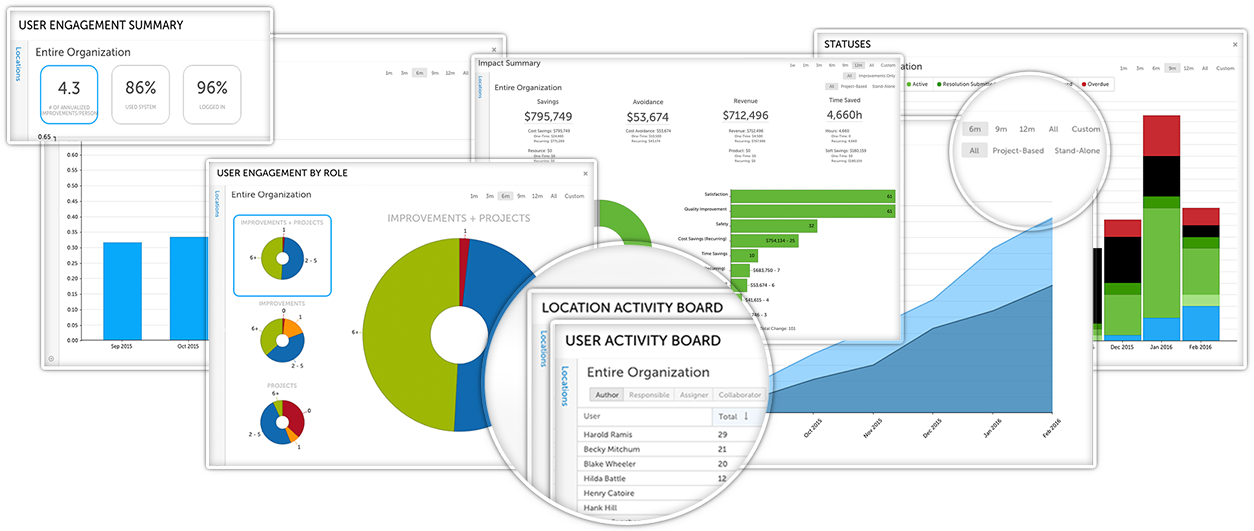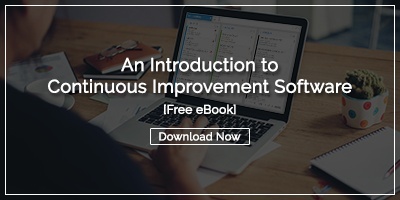 It may seem strange for us to say that you don't need software to run a kaizen event, but it is true. People do it every day. So, if that's working for you, great. But if you are reading this post, you are probably on the hunt for ways to make your kaizen events more effective. There are tons of ways to improve the success of your events. (We have lots of tips.) However, if you ask our most successful clients, they will tell you that implementing a technology platform that supports kaizen generally, and kaizen events, in particular, has made all of the difference.
It may seem strange for us to say that you don't need software to run a kaizen event, but it is true. People do it every day. So, if that's working for you, great. But if you are reading this post, you are probably on the hunt for ways to make your kaizen events more effective. There are tons of ways to improve the success of your events. (We have lots of tips.) However, if you ask our most successful clients, they will tell you that implementing a technology platform that supports kaizen generally, and kaizen events, in particular, has made all of the difference.
Here's how kaizen event software can help you get more from your continuous improvement efforts.
Collect opportunities for improvement every day to pick the best event targets.
Setting your kaizen event up for success starts well before the appointed date. The first important decision is what processes or problems will be targeted during the event. A kaizen software solution helps you capture all employee ideas for improvement and trouble reports. The team can then evaluate them all and decide which require the intensity of a kaizen event, and which can be addressed in other ways.
Learn from the past.
If you create a repository that documents every kaizen event, your team can search for challenges similar to the one at hand that have been addressed in the past. They can evaluate what worked and what didn't to make smarter decisions about how to improve the process they are addressing today. Your organization gains valuable best-practice knowledge with every event.
Actively manage and document your event.
Spreadsheets and email are popular kaizen event management "tools," but they are not ideal for active management. Spreadsheets don't send a notification when someone is added to a task, or a due date is missed. Without an automated workflow, the onus falls on the event facilitator and participants to make sure that no balls are dropped. Kaizen event software takes the pressure off by providing alerts and notification in the app and an email whenever important information needs to be shared.
Make relevant documents and information available.
Most kaizen events have an element of pre-measurement to get the baseline against which success will be measured. It is also essential to have the current standard work, along with any supporting images or other documents available to the team. Kaizen software gives you one place to put all documents and other artifacts so that the team has ready access to all of the information they need.
Measure the impact of each Kaizen event.
Just like the planning begins well before the event gets started, the need for measurement lasts long after. An event may feel like a success in the immediate aftermath, but the proof is in the long-term impact. Did the event reduce costs, speed production, eliminate waste, or change some other key performance indicator? Without an improvement platform in place, it can be difficult to keep track of the results over time, but that's precisely what executives and employees need to remain engaged in continuous improvement.
Broadcast success.
Kaizen events take a lot of effort and use precious resources, so you want to get the most out of that investment. That's why it is important to share the results of successful events as broadly as possible. When people see others engaged in improvement work that gets positive results and recognition, they are more likely to participate as well. Broadcasting success and showing appreciation for participants helps build a culture of improvement.
All of this is predicated, of course, on choosing a solution that has all of the features you need to support your events. When looking at your options, keep the employee experience in mind. Look for technology that allows you to configure the screens to meet the needs of each user. Also, be sure that it is easy to report event results in conjunction with all of the other improvement activities going on in your organization.
Implementing technology that structures your kaizen events will require a financial investment and some effort to get it launched, but if it makes each event a little more successful and helps your organization make smarter decisions about how to apply improvement resources, it will be well worth the endeavor.
![[Watch Now] Top-Down Improvement Software Demo](https://no-cache.hubspot.com/cta/default/326641/2eef07b8-9131-49c5-9adc-bafb52e8796e.png)



Add a Comment